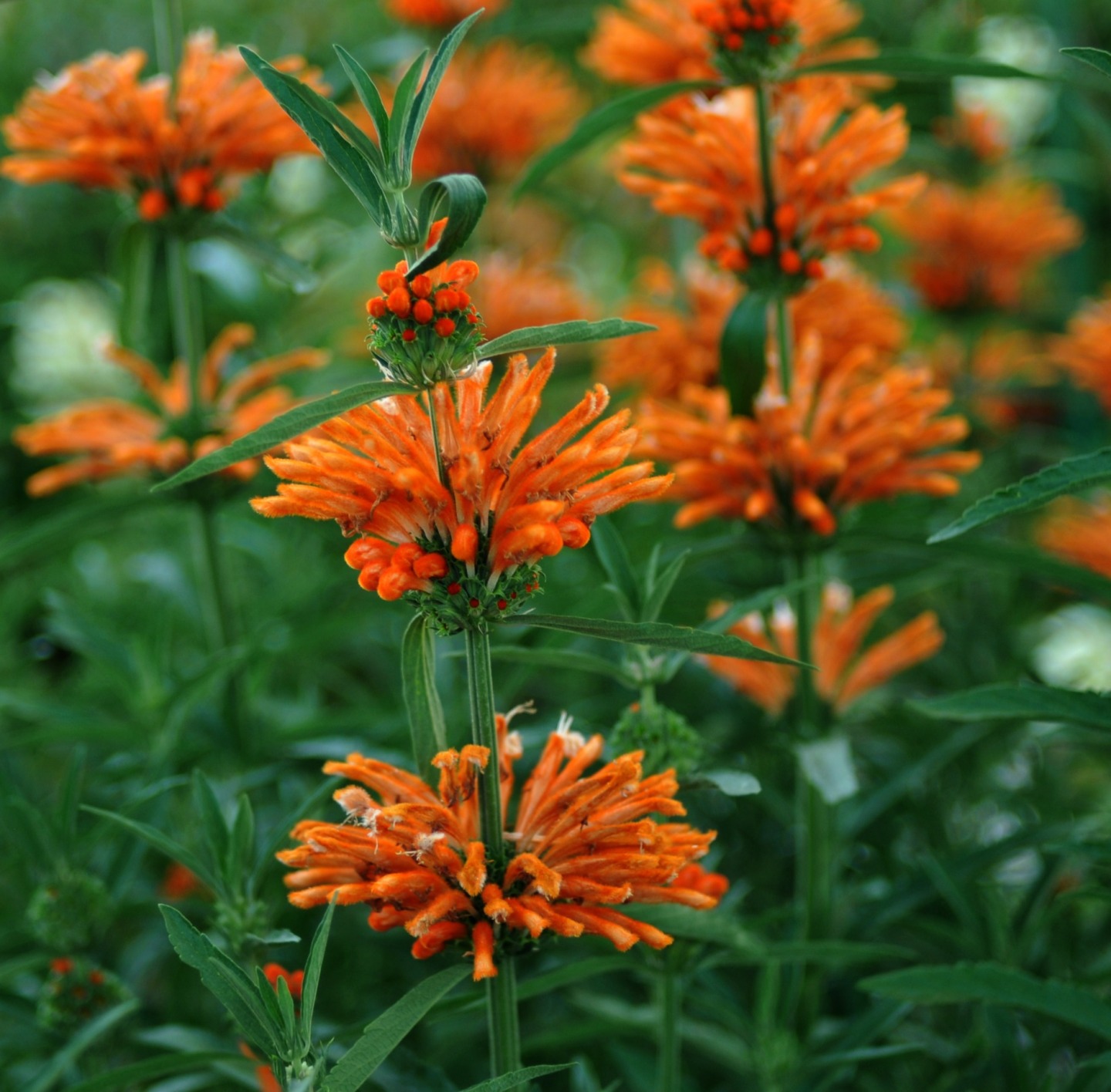Funky is just one way to describe the plant commonly referred to as lion’s tail or wild dagga. Leonotis leonurus, a native plant of southern Africa, is identifiable by its tall, spiky clusters of orange or white tubular flowers. The fuzzy blooms will appear from late spring through fall in bunches strung in intervals along its tall stem. The shrub grows up to 6 feet tall and 4 feet wide.
The lion’s tail thrives in full sun and well-drained soiled. A native to dry climate, the lion’s tail is drought-tolerant and once established will need a thorough watering only once a month to keep it happy. Not only can it weather hot temperatures and dry seasons, but it can also survive winter freezes down to 20 degrees Fahrenheit. To keep a healthy, blooming plant, prune back once a year after flowering. This plant is perfect for a butterfly garden, as it attracts several winged pollinators like bees, birds and butterflies.
This species actually belongs to the Lamiacae (mint) family. Like members of this family, the leaves and flowers have been used in the past for medicinal purposes. It has been used to treat sores and skin infections. Tea made from the whole plant has been used for arthritis, kidney disorder, obesity, rheumatism and also as a diuretic. In some parts of the world, extracts from flowers and leaves are used as substitutes for cannabis.
Learn more about the lion’s tail here.
For tips on growing plants that are disease and pathogen free, see guidance here and here.


Why not recommend a native plant instead of this non-native? There are so many beautiful native plants.
LikeLike
Hi Barbara, Thanks for the feedback.You’re right; we have many great natives! Our last two featured plants have been California native plants – see June and July 🙂 We try and mix it up with plants of different colors, textures and characteristics. And we’re always open to suggestions. If you have a have a favorite CA native you recommend to feature, we’d love to hear about it!
LikeLike
Great, but where can I purchase it?
LikeLike
Hi Mary, you can find this plant at your most retail nursery. You can refer to this list of local nurseries to see if it’s available: http://www.valleywater.org/Programs/Water-WisePlants.aspx. Please note we do not endorse any specific nursery.
LikeLike